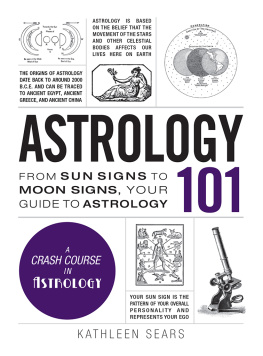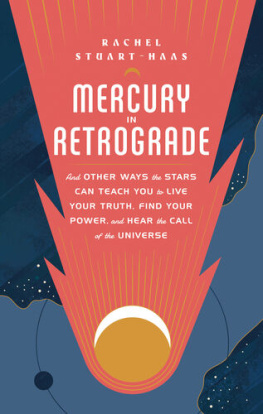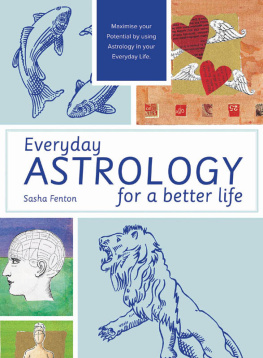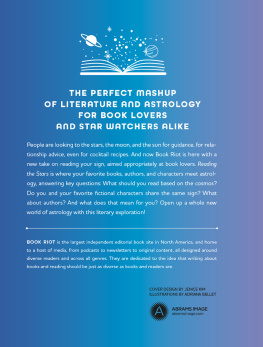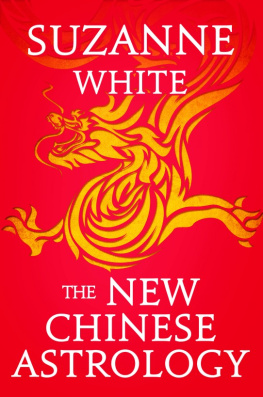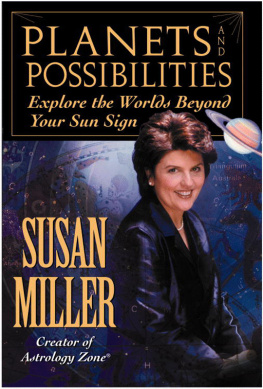Contents
Guide
ASTROLOGY
FROM SUN SIGNS TO MOON SIGNS, YOUR GUIDE TO ASTROLOGY
KATHLEEN SEARS

Avon, Massachusetts
CONTENTS
INTRODUCTION
Dating back to the ancient Egyptians, astrology has been a source of prophecy and lore for thousands of years. This venerable system is based on the idea that the positions of the stars, planets, and other heavenly bodies have a profound impact on events here on Earth. The month and day of your birth is linked inextricably to the movements of worlds millions of miles away.
In ages past, astrologers were widely consulted for their readings of the zodiac. In the Middle Ages, kings and emperors employed court astrologers, whose charge it was to cast horoscopes for their royal patrons. During the Renaissance, astrologers continued to flourish even as much astrological lore was incorporated into the new science of astronomy. But even today, tens of thousands of people believe in astrology and follow with interest their horoscopes in the newspapers and online.
In this book youll find both the history and lore of astrology. Youll learn the signs of the planets and how to interpret them. Youll hear about famous astrologers and their predictions for the futurefrom the ancient Roman writer Ptolemy to Elizabeth Is court magician John Dee. Youll see the profound cultural impact of astrology, in literature, art, and music. Youll follow its long, slow decline in the face of modern science and its revival as an important part of the New Age movement today. And youll learn the practical aspects of astrology: how to read a birth chart, how to cast a horoscope, and how to find what the stars say about your future in love, in money, and much more.
So prepare for a breathtaking journey that encompasses the past, present, and future. Lets begin Astrology 101.
CHAPTER 1
THE STORY OF ASTROLOGY
From the time we learned to walk upright, humans looked at the heavens above them and wondered.
What were the bright points of light that shone in the night sky? Were they fires burning far away in the vast darkness? Were they gods? Were they something else unknown?
In todays well-lit, urban-based world, its hard to realize just what the night sky looked like to our ancestors. Today, when we look up in the darkness, we see a few stars and planets. If we live in rural areas we can see more. Perhaps, with the aid of a simple telescope, we can make out the dim luminosity of the Milky Way and a few of the most distant planets such as Jupiter and Saturn. But imagine living in a world almost without light at night, where the only source of illumination came from a few campfires. The cosmos, filled with starlight, must have seemed a mighty wonder, beyond the grasp of humans, solid and immovable as the earth beneath them.
And yet... as these people watched, they realized that the stars were not immovable. They rose and fell in a rhythm that could be tracked and predicted. At certain times and in certain seasons the same groups of stars appeared in the same place. Among this fixity, though, some stars appeared to move in a different fashion. The ancient Greeks, more than three thousand years ago, called them planetes, or wandering stars. These were the planets, of which the ancients knew only those that could be seen with the naked eye: Mercury, Venus, Mars, Jupiter, and Saturn.
As the centuries came and went, people charted the movement of these planets. They believed that celestial cycles could only be the work of gods, and since the gods controlled the fate of men and women it was only natural to believe that the planets and stars influenced human affairs as well. The planets were given the names of gods. The Romans called the red planet Mars, the god of war. The brightest star in the sky they named Venus, for the goddess of love (a serious misnomer, it turns out, since Venus, as shown by modern observation and space probes, is a thoroughly nasty place).
This evolution of human understanding of the skies forms the cradle of astrology, a theory that stretches from the ancient world down to our own day.
ASTROLOGYS BEGINNINGS
From Babylon to Ancient Greece
The birth of astrology depended on three things: imagination, observation, and mathematics. The first two were common enough in the ancient world. The third developed gradually.
About 2000 B.C.E. in the city-state of Babylon in Mesopotamia, priests were becoming adept at reading the future in a variety of ways: through watching the flight of birds, in the entrails of sacrificed animals, and in the movement of the stars and other heavenly bodies. By the seventeenth century B.C.E. , they had compiled elaborate tables charting these movementsthe first astrological documents of which we know.
The Venus Tablet
The Venus Tablet of Ammisaduqa refers to a tablet recording observations about the movement of the planet Venus. It was written in cuneiform, the writing style of early Mesopotamia, and was probably compiled around the seventeenth century B.C.E. It was evidently a document of some importance, since a number of copies of it still exist (albeit often in fragmentary form). The object of observing Venus was evidently to make predictions about the reign of various kings, including Ammisaduqa, for whom the tablet is named.
During the next thousand years, astrological predictions continued to be refined, and by the eighth century B.C.E. , the libraries in Babylon contained more than 7,000 astrological portents that priests could consult. These were known as the Enuma Anu Enlil. The Babylonians had a considerable advantage over other contemporary civilizations in compiling this material because their understanding of mathematics was the most advanced in the ancient world. By 500 B.C.E. they had invented the zodiac.
The Hermetic Tradition
Babylonian zodiacal lore made its way to Egypt where it mixed and assimilated Egyptian mystical and religious traditions. By the sixth and seventh centuries B.C.E. , these had also become intermingled with Greek beliefs. Among the most important products of this mixing was the creation of what became known as the Hermetic tradition. The Greek god Hermes, the messenger of the gods, also had features of a number of other gods, including the Egyptian god Thoth. Through a process that is not very clear, he became known as trismegistos, which means that three adjectives, some of which were associated with Thoth, were applied to him. Finally he was called Hermes Trismegistus, which we might translate as Hermes the Thrice-Renowned. A large body of writings grew up in association with him, known as Hermetic writings. These included a number of important astrological documents that incorporated and integrated Greek, Babylonian, and Egyptian astrological findings.
Hellenistic Astrology
By the second century B.C.E. , most of the elements we associate with astrology were in place.
- The horoscope, or birth-chart, gave a picture of the state of the stars at the time of a childs birth.
- The Sun, Moon, and known planets were set against the circle of the zodiac.
- There was a notion of certain zodiacal signs being ascendantthat is, rising over the horizon at the moment of birth.
CLASSICAL AND MEDIEVAL ASTROLOGERS

